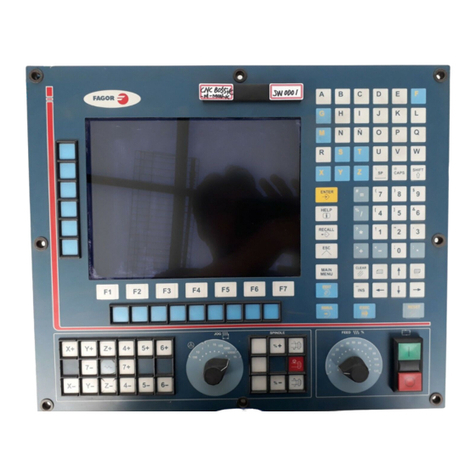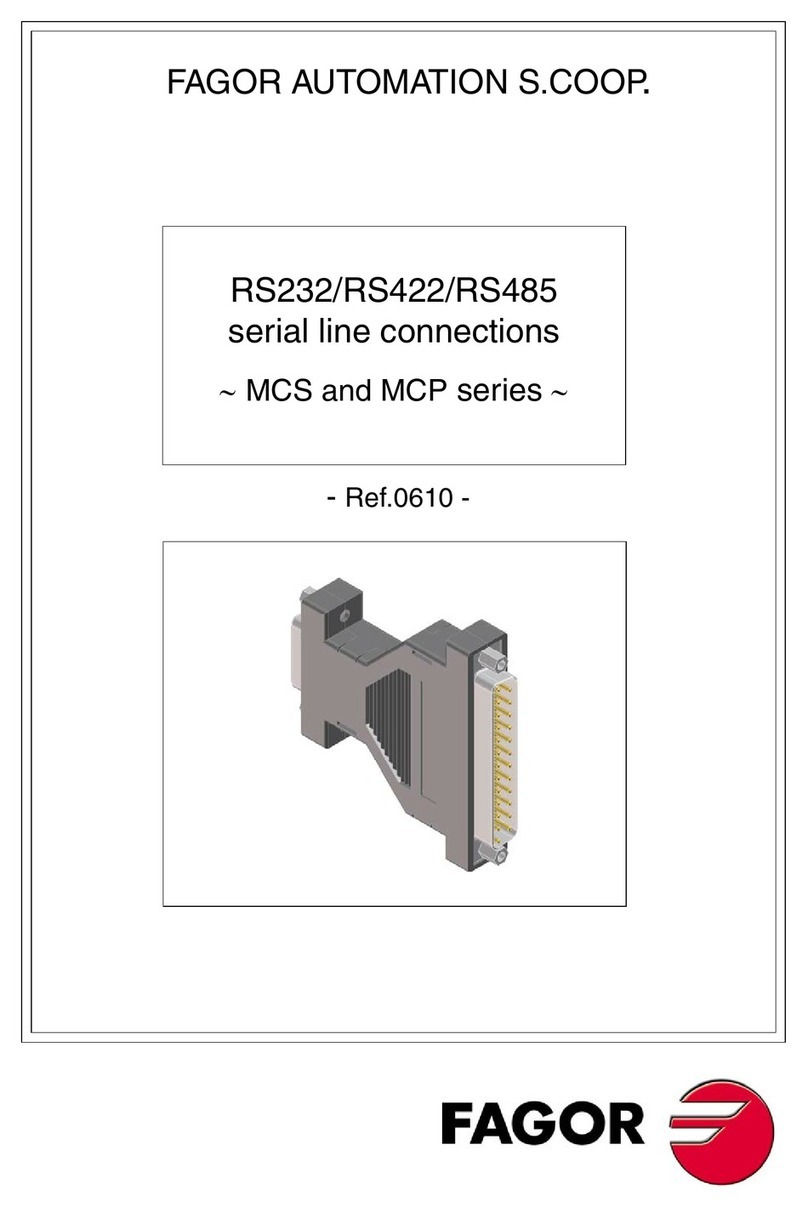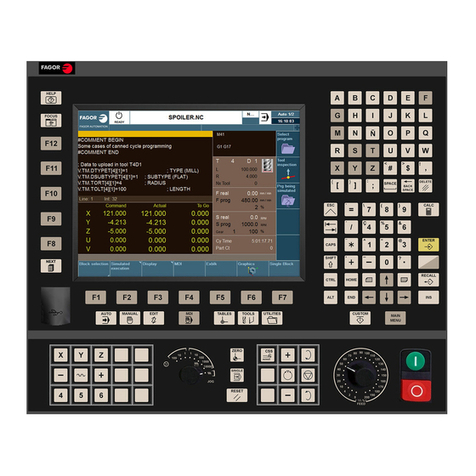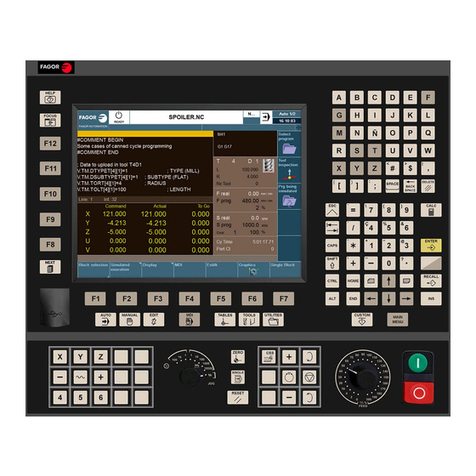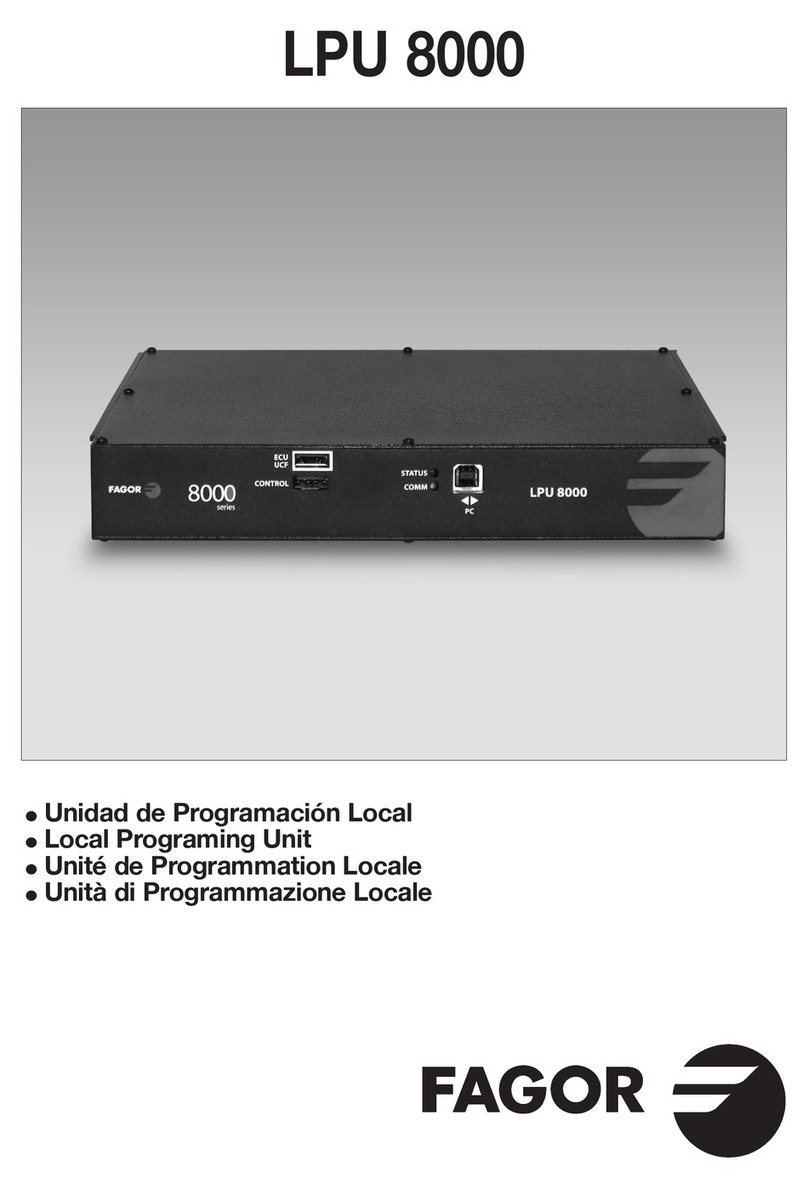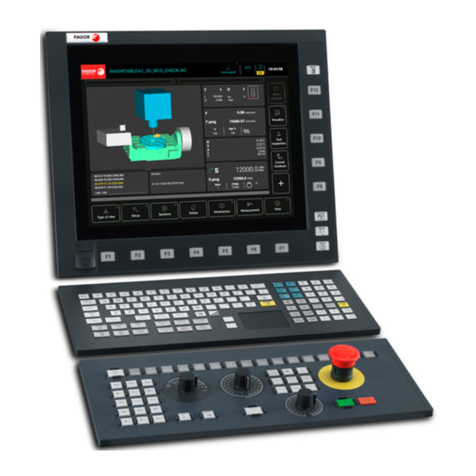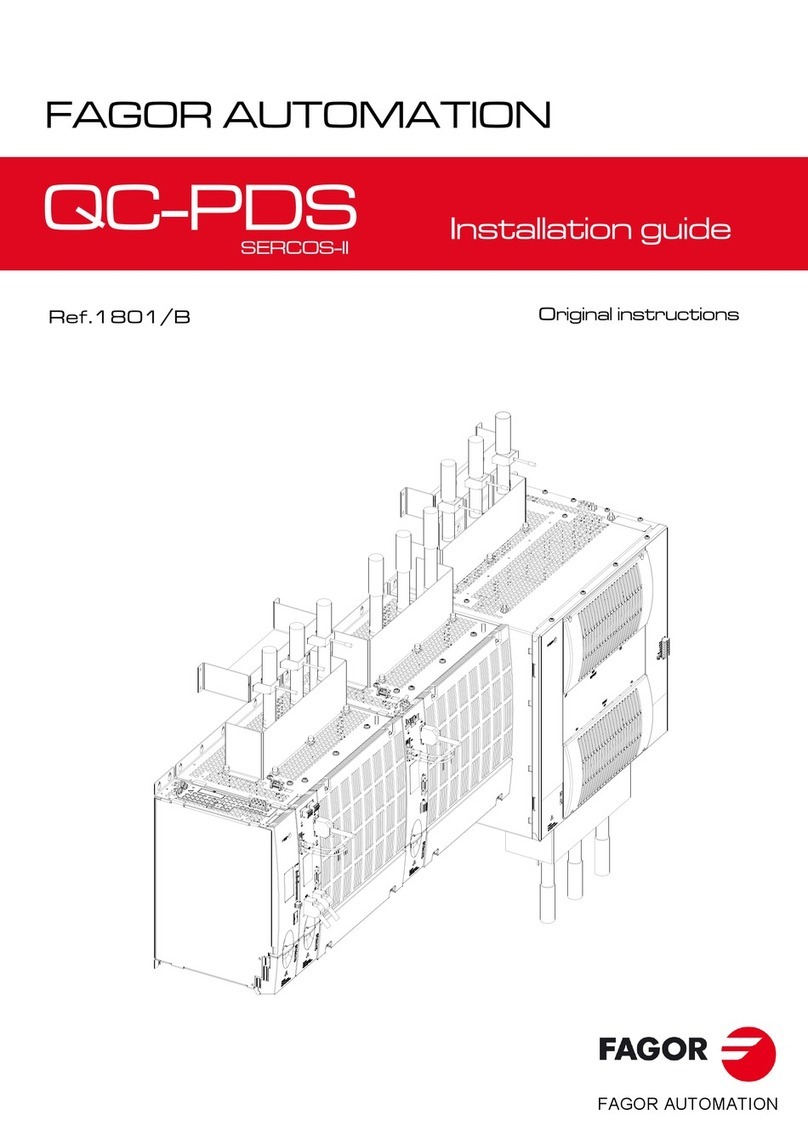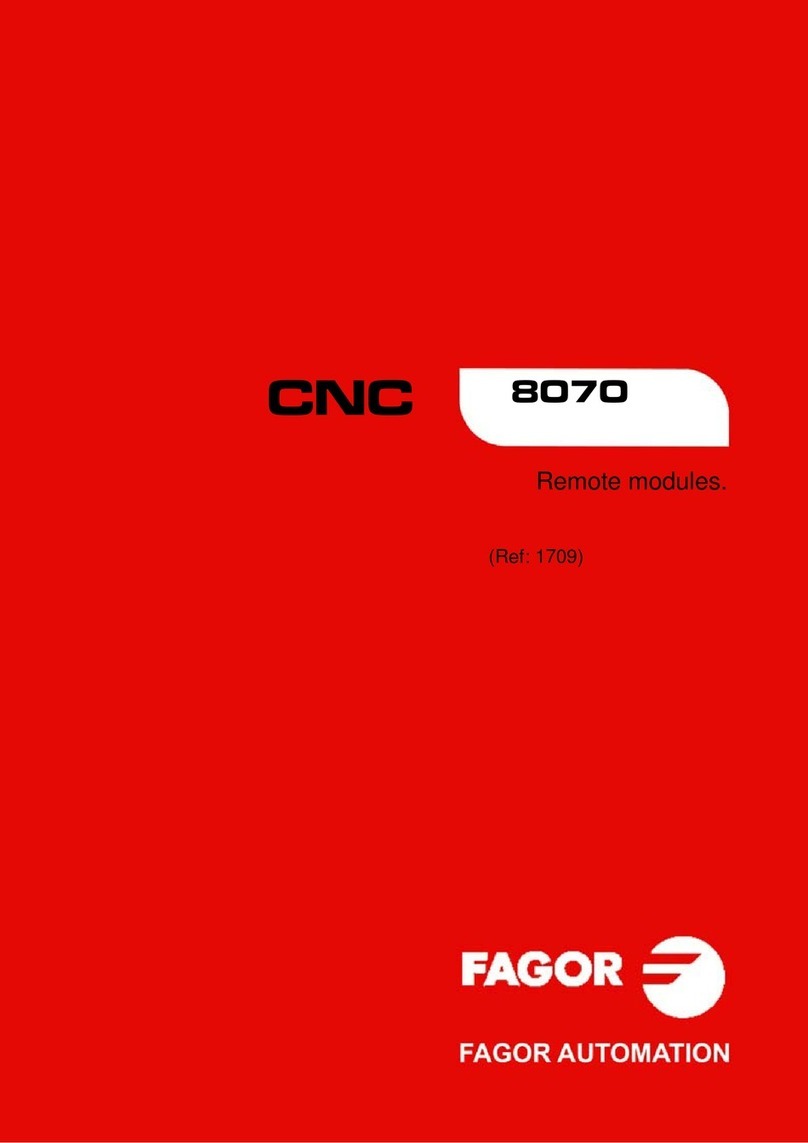
Operating manual
CNC 8070
(REF: 1505)
·7·
18.4 Editing in C language or mnemonic language. ............................................................ 294
18.4.1 Softkey "Analyze"..................................................................................................... 295
18.4.2 Softkey "File". ..........................................................................................................295
18.4.3 Softkey "Undo". ........................................................................................................ 295
18.4.4 Softkey "Operations with blocks". ............................................................................ 296
18.4.5 Softkey "Find/Replace". ........................................................................................... 297
18.4.6 Softkey "Customize"................................................................................................. 298
18.5 Editing in contact (ladder) language (softkeys)............................................................ 299
18.5.1 Softkey "Analyze"..................................................................................................... 300
18.5.2 Softkey "File". ..........................................................................................................300
18.5.3 "Edit" softkey. ..........................................................................................................301
18.5.4 Softkey "View". ........................................................................................................ 303
18.5.5 Softkey "Marks". ...................................................................................................... 303
18.5.6 Softkey "Find"........................................................................................................... 304
18.5.7 Softkey "Customize"................................................................................................. 304
18.6 Program monitoring ..................................................................................................... 305
18.6.1 Softkey menus. Monitoring in C language or mnemonic language. ........................ 306
18.6.2 Softkey menus. Monitoring in contact (ladder) language. ....................................... 307
18.7 "Commands" service.................................................................................................... 309
18.7.1 Softkey menus. Options of the "Commands" service............................................... 309
18.8 "Outputs" service ......................................................................................................... 310
18.8.1 Softkey menus. Options of the "Outputs" service. ................................................... 311
18.9 "Logic analyzer" service............................................................................................... 312
18.9.1 Editing logic analyzer data ....................................................................................... 313
18.9.2 Save, load and reset the analyzer configuration...................................................... 315
18.9.3 Execute and analyze trace....................................................................................... 316
18.9.4 Customize the appearance of the logic analyzer ..................................................... 316
18.10 "Monitoring" service ..................................................................................................... 317
18.10.1 Description of resource tables.................................................................................. 318
18.10.2 Definition of the table resources............................................................................... 319
18.10.3 Options of the "Monitoring" service (softkeys). ........................................................ 320
18.11 "Cross references" service........................................................................................... 321
18.11.1 Softkey menus. Options of the "Cross reference" service. ...................................... 322
18.12 "Statistics" service........................................................................................................ 323
18.12.1 Softkey menus. Options of the "Statistics" service................................................... 324
18.13 "Messages" service...................................................................................................... 325
18.13.1 Softkey menus. Options of the "Messages" service................................................. 326
18.13.2 Editing the message and error table ........................................................................ 327
18.13.3 Displaying PLC messages ....................................................................................... 328
18.13.4 Displaying PLC errors .............................................................................................. 329
18.13.5 Grouping the additional information text files in a single file. ................................... 330
18.13.6 Save, load and print a message and error table ...................................................... 331
CHAPTER 19 MACHINE PARAMETERS
19.1 Appearance of the machine parameter tables ............................................................. 333
19.1.1 Softkey menus. ........................................................................................................ 334
19.2 Parameter table description ......................................................................................... 335
19.2.1 "M" function setting table.......................................................................................... 336
19.2.2 Compensation table ................................................................................................. 337
19.2.3 Kinematics table....................................................................................................... 338
19.2.4 OEM parameters...................................................................................................... 339
19.3 Operations with tables ................................................................................................. 340
19.3.1 Data editing and validation....................................................................................... 340
19.3.2 Save and recall tables.............................................................................................. 341
19.3.3 Find text. ................................................................................................................. 342
19.3.4 Importing and exporting compensation tables. ........................................................ 343
CHAPTER 20 SETUP ASSISTANCE
20.1 Oscilloscope................................................................................................................. 346
20.1.1 Interface description................................................................................................. 347
20.1.2 Softkey menus. ........................................................................................................ 348
20.1.3 Configuration screen ................................................................................................ 351
20.1.4 Configure and execute the oscilloscope function..................................................... 352
20.1.5 Machine parameter editing. ..................................................................................... 353
20.2 The Bode diagram ....................................................................................................... 356
20.2.1 Interface description................................................................................................. 357
20.2.2 Softkey menus. ........................................................................................................ 358
20.2.3 Machine parameter editing. ..................................................................................... 361
20.2.4 Configuration screen ................................................................................................ 363












